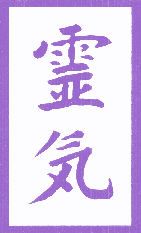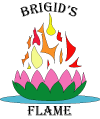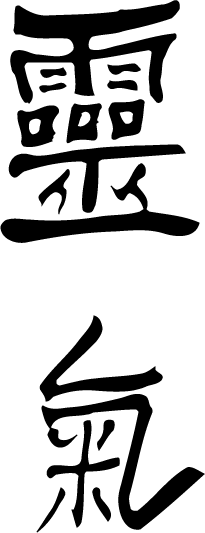
A BRIEF MODERN HISTORY OF REIKI
Reiki, as explained in Introduction to Reiki and discussed further in Levels of Ki, is an energy. It is a form of ki. Thus, it has in all likelihood been around since before human life began. It is only fair then to call what follows a "modern history of reiki".
Reiki's modern history starts with Mikao Usui, a Japanese man who lived from 1865 to 1926. He studied kiko at Mount Kurama, a Tendai Buddhist temple, as a youth. At some point prior to April 1922, Usui decided to go on a 21-day retreat on Mount Kurama. He spent this time fasting and meditating. At the end of this retreat, a light entered the top of his head and Usui had a satori (enlightening experience). From this experience, Usui developed his system of reiki. (There can be other systems that use reiki, which is why this system of reiki is commonly called Usui Reiki, although some of these may differ from what Usui likely taught.)
In April 1922, Usui moved to Tokyo and started the Usui Reiki Ryoho Gakkai (Usui Reiki Healing Society), which is still in existence today (though I haven't been able to contact them).
Usui taught many people his system of using reiki. One of them was Keizo Ogawa, who then taught it to his adopted son, Fumio. Fumio Ogawa is a key source regarding what happened with reiki in Japan. Usui also taught a Japanese naval officer, Chujiro Hayashi.
Chujiro Hayashi lived from 1880 to 1940. He served in the Russo-Japanese War from 1902 to 1906. He learned reiki from Usui, and in the 1930s he opened his own reiki clinic. He began to teach his own system of reiki. One of his students was Chiyoko Yamaguchi, who taught reiki to her son, Tadao (another key source regarding the practice of reiki in Japan). Another of his students was Hawayo Takata, who came to see him sometime after 1935.
Hawayo Takata was a Japanese woman born in Hawaii in 1900. Her husband died young in 1930 leaving her with two daughters to raise. She succumbed to depression after her husband's death and suffered many ailments. Her story is that she was about to have surgery, but something told her not to and then she found out about Hayashi's reiki clinic. She went to him for healing. It was successful. Then she decided she wanted to learn reiki. Hayashi taught Takata what he knew of reiki, which was likely his own system of reiki modified from Usui's.
Hayashi and Takata taught reiki in Hawaii for a while. Then with the onset of WW2, Hayashi decided to end his life before he was called to serve again in another war. He died in 1940. After Hayashi's death, Takata decided not to teach reiki in Hawaii and the United States. It would be about thirty years later before Takata would teach reiki again. In 1970, Takata began teaching what she called "Usui Shiki Ryoho". She trained a total of 22 people in the United States to the teaching level of reiki, which she called "Reiki Master". (Note it is only through Takata's teachings that there are "Reiki Masters".)
When Takata started teaching reiki in 1970, she thought she was the only reiki teacher left and therefore she could make rules and regulations for reiki. Essentially, she created her own system of reiki rather than teaching Usui's. Note also that she never met Usui, only Hayashi who probably told her many stories - some of which may be elaborated. What Takata didn't know though was that reiki never died out in Japan. It continued to be taught, and probably in an unbroken line. Unlike the Japanese in the United States, in Japan the people didn't have to hide their practices (though, reiki was likely taught in a less formal manner in Japan than in the United States). So far, the major sources from Japan about reiki come from the son of a student of Hayashi's and the son of a student of Usui's. Only in the past decade or so have we been introduced to reiki as it was, and is, practiced in Japan. Prior to that, many people believed Takata to be the one and only "Grandmaster" of reiki.
Now, what we have are many different groups of reiki practitioners. The bulk of reiki practitioners in North America come from Takata's line of reiki (I will call this Western reiki), though the teachings may have changed from hers. (There were some things that are highly debatable, such as her charging $10,000 for a "Reiki Master" course.) The reiki practitioners that have remained with Takata's tradition are usually part of the Reiki Alliance. (They still say Takata was the "Grandmaster" of reiki, and now it is Takata's grand-daughter who is the "Lineage Bearer"). There are many Western reiki practitioners though who do not belong to the Reiki Alliance believing that reiki cannot be regulated and no one "owns" reiki. (I belong to this latter group as I strongly believe no one can own reiki.) Then, there is the Usui Reiki Ryoho Gakkai, and other Japanese reiki teachers who learned from Usui or Hayashi (Japanese reiki). There are also Japanese reiki teachers who learned Western reiki and have modified it with Japanese reiki (Hiroshi Doi is one such person). There are those who learned Western reiki first and then decided to learn reiki from Japan (Frank Arjava Petter is one such person).
The reiki course I took was Western reiki. I took this primarily due to lack of options and because it doesn't matter where you receive your attunements (the process that is used to open your energy centers and allows you to use reiki). I then taught myself Japanese reiki by researching reiki further. By carefully researching reiki, I have attempted to reconstruct what Usui likely taught in Japan back in 1922 to 1926.
Reiki has been taught to many people since 1922 and the tradition of teaching it continues.
For more information about Mikao Usui, Chujiro Hayashi, and Hawayo Takata, please see History of Mikao Usui, History of Chujiro Hayashi, and History of Hawayo Takata.
LIST OF SOURCES
Reiki: A Piatkus Guide by Penelope QuestEssential Reiki: A Complete Guide to an Ancient Healing Art by Diane Stein
The Spirit of Reiki: The Complete Handbook of the Reiki System by Walter Lubeck, Frank Arjava Petter, William Lee Rand
The Original Reiki Handbook of Dr. Mikao Usui by Dr. Mikao Usui and Frank Arjava Petter
The Hayashi Reiki Manual by Frank Arjava Petter, Tadao Yamaguchi, Chujiro Hayashi
Reiki Fire by Frank Arjava Petter
http://web.archive.org/web/20020601180029/angelreiki.nu/level1/level1.htm
http://www.reiki.org/FAQ/HistoryOfReiki.html
http://www.threshold.ca/reiki/origins2.html
Copyright C.J. Chow April 2007

